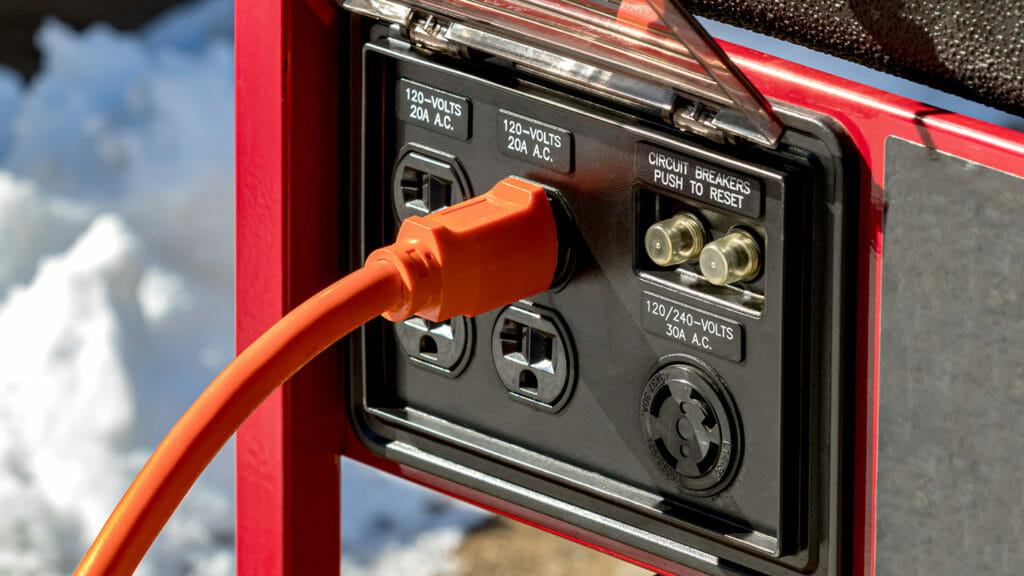

Less than half of assisted living communities in Texas have backup generators, according to a survey of long-term care facilities conducted after a 2021 winter storm. By comparison, most nursing homes have them on site.
The Texas Health and Human Services Commission conducted a voluntary survey of the state’s 2,025 assisted living communities and 1,217 nursing homes in response to power outages caused by Winter Storm Uri that swept through the state in 2021. According to the survey results, 99% of nursing home respondents reported having generators, compared with 47% of assisted living communities.
Not all bad news, however
Texas Assisted Living Association President and CEO Diana Martinez told McKnight’s Senior Living, however, that although the survey showed that slightly less than half of assisted living buildings have backup generator capacity, it revealed that “way more than half” of residents live in a community with a backup generator, “and that is what is important.”
“If you look at the data generated by the survey, around 60% of the larger communities had backup generators,” Martinez said. “The larger communities are where most of Texas’ assisted living residents reside.”
Another important point to note, she said, is that assisted living communities located in areas most affected by hurricanes are more likely to have backup generators.
“I know that many of our members have explored ways to strengthen emergency power capacity,” Martinez said. “Unfortunately, costs due to COVID-19 and supply issues have put some of those plans on hold.”
Martinez also noted that the way the state classified assisted living providers skewed the results. For example, she said, facilities with certified Alzheimer’s units sometimes have two licenses, meaning that some providers were counted twice. The number of assisted living communities in the state actually is 1,649, showing a response rate closer to 92% (compared to the state figure of 75%).
State law does not require assisted living communities to have a generator, although since 1996 it has required new nursing facilities and those that relocated to new buildings to have a generator. Since 2016, federal law has similarly required generators in new and replacement nursing homes.
Survey results
According to the state survey results, most generators at assisted living communities power emergency lighting and exit signs, fire alarm systems, emergency electrical receptacles, and refrigerators and freezers. Less than 60% of communities responded that their generators served air conditioning or heating equipment.
Sixty-seven percent of assisted living respondents also indicated that generators could provide heat to at least part of a facility during a power outage, and 63% indicated that generators could cool at least part of a facility.
Answers varied on the amount of power a generator could provide. Of note, 111 assisted living communities and 66 nursing facilities reported indefinite or continuous power due to being connected to the city’s natural gas lines as a source of emergency power. The report noted that interruption to gas lines might leave these facilities without emergency power. Other respondents indicated that they share a grid with a hospital and never have lost power.
Most assisted living communities with generators reported the ability to provide power for one to three days.
The survey was conducted from September 2021 to March 2022. HHSC collaborated with the Texas Health Care Association, LeadingAge Texas, the Texas Assisted Living Association, the Texas Organization of Residential Care Homes and the Independent Nursing Home Coalition to encourage member facilities to complete the survey. Approximately 75% of assisted living communities — 92% according to TALA — and 94% of nursing homes participated in the survey.
Legislation on the horizon
Texas state Rep. Ed Thompson (R-Pearland) originally introduced a bill that would have required generators in assisted living facilities and nursing homes. The measure ultimately failed and lawmakers opted for a survey to better understand what backup power sources already exist. Thompson told KXAN that he plans to re-submit the bill this fall.
Thompson’s bill would have required long-term care facilities to have an emergency generator to address temperature controls, as well as emergency evacuation systems. He said he is willing to work with long-term care facilities on a new bill.


